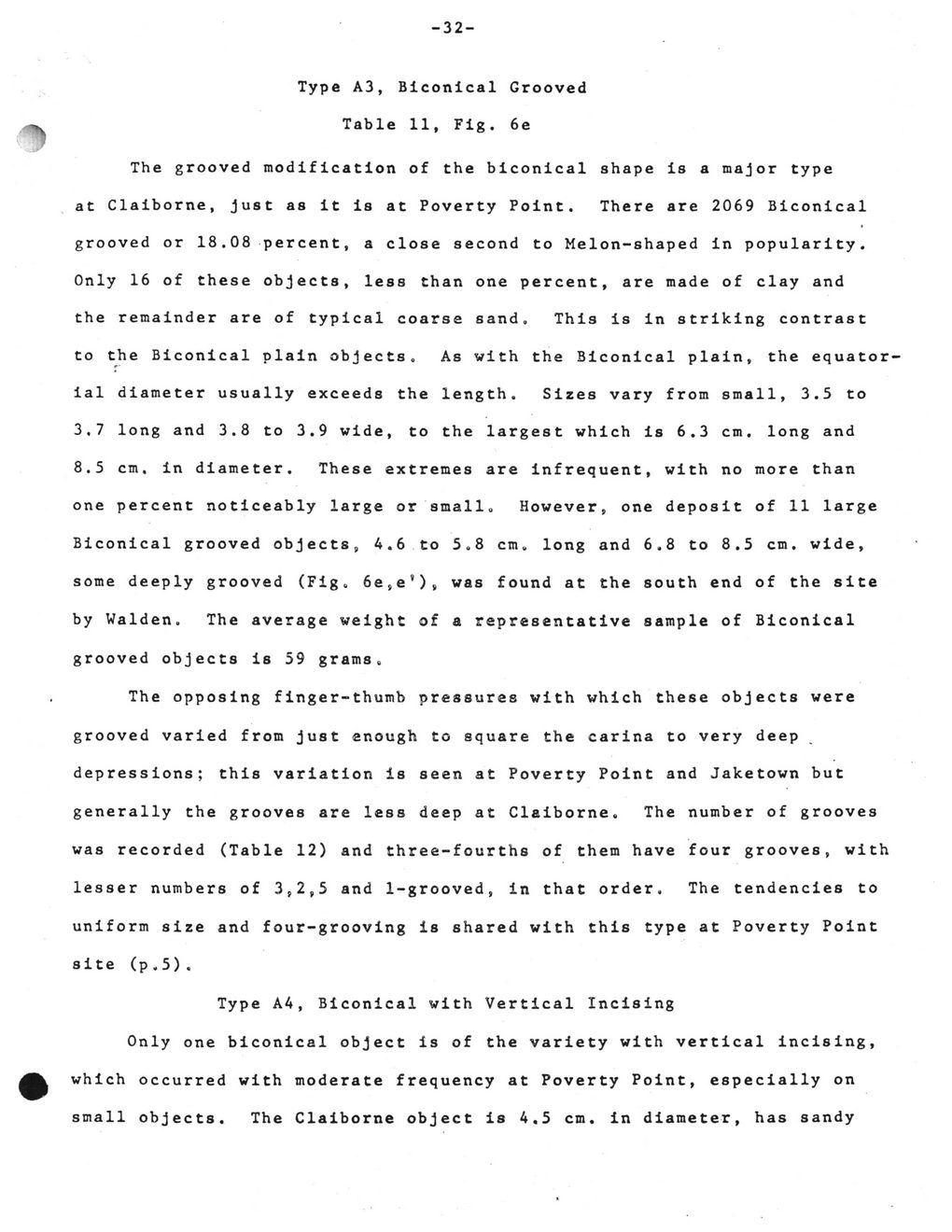This text was obtained via automated optical character recognition.
It has not been edited and may therefore contain several errors.
Type A3, Biconical Grooved Table 11, Fig. 6e The grooved modification of the biconical shape is a major type at Claiborne, Just as it is at Poverty Point. There are 2069 Biconical grooved or 18.08 percent, a close second to Melon-shaped in popularity. Only 16 of these objects, less than one percent, are made of clay and the remainder are of typical coarse sand. This is in striking contrast to the Biconical plain objects. As with the Biconical plain, the equatorial diameter usually exceeds the length. Sizes vary from small, 3.5 to 3,7 long and 3.8 to 3.9 wide, to the largest which is 6.3 cm. long and 8.5 cm. in diameter. These extremes are infrequent, with no more than one percent noticeably large or small,, However, one deposit of 11 large Biconical grooved objects, 4.6 to 5.8 cm. long and 6.8 to 8.5 cm. wide, some deeply grooved (Fig, 6e,e'), was found at the south end of the site by Walden. The average weight of a representative sample of Biconical grooved objects is 59 grams. The opposing finger-thumb pressures with which these objects were grooved varied from just enough to square the carina to very deep depressions; this variation is seen at Poverty Point and Jaketown but generally the grooves are less deep at Claiborne. The number of grooves was recorded (Table 12) and three-fourths of them have four grooves, with lesser numbers of 3,2,5 and 1-grooved, in that order. The tendencies to uniform size and four-grooving is shared with this type at Poverty Point site (p . 5) . Type A4 , Biconical with Vertical Incising Only one biconical object is of the variety with vertical incising, which occurred with moderate frequency at Poverty Point, especially on small objects. The Claiborne object is 4.5 cm. in diameter, has sandy

Walden 042